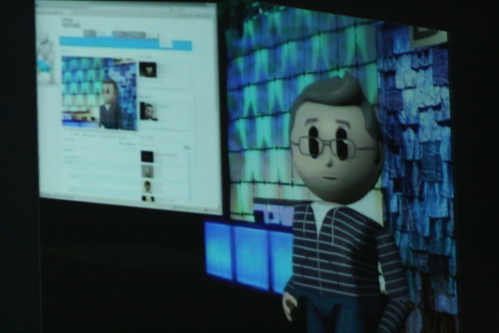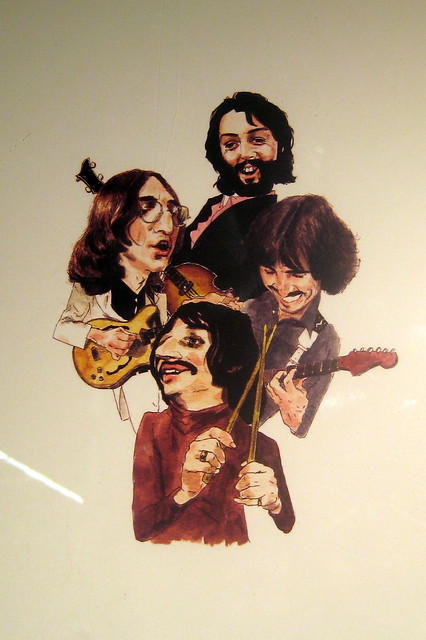Total Pageviews
Friday, November 19, 2010
Web 2.0 for Students with Disabilities
My name is Clint Winter and I am Special Education teacher at Clarke Middle School in Athens, GA. I have been teaching Special Education for 10 years and am currently the Special Education Team Leader at my school. It is amazing how much technology there is for free that can help teach our students with disabilities overcome their barriers. This blog is intended to help teachers find new and interesting websites that can help their students be successful in the classroom. I have been reading two texts for this blog, Choosing Web 2.0 Tools for Learning and Teaching in a Digital World authored by Pam Berger and Sally Trexler and also Blogs, Wikis, Podcasts, and other Powerful Web Tools for Classrooms by Will Richardson. You can follow all of the websites that I will be reviewing by accessing either my delicious account (cswinter4) or by accessing my google spreadsheet here
Wednesday, November 17, 2010
Come Together
Collaboration is a powerful tool. Students now have the availability to all work on the same document, share ideas with each other, and the entire world. Students and teachers can truly come together to make authentic works and share with ideas with each other. Below are Web2.0 tools that I thought could be valuable for Collaboration.
readwritethink.org - Readwritethink.org is a collaborative reading and writing site with information for teachers, parents, and after school tutors. This website offers lesson plans, interactive technology sites, strategies for professionals, and a professional development library. This site could provide great ideas for differentiation in the classroom for students with disabilities.
wikispaces.com - Wikis are a great tool to share and communicate ideas. For example: I have set up a wiki for our Special Education Department at Clarke Middle School to post and share useful links and forms. Wikis can be edited by most anyone and are a great source for up to the minute news and events. Classroom wikis can have information about assignments, useful and helpful links for a given area of study, a place for students to post their ideas, links, and findings. The possibilities of using wikis in the classroom are almost endless. I think that Wikis are great ways for students to comment and elaborate on their learning. Also, Wikis, can be a great way for students to organize their work. For example, a student could have a wiki that links all of their web 2.0 tools to one place. Wkispace is free for educators and is a very easy way for one to share information to their classes. With Wikispaces one can also include widgets in their posts and edits.
PBworks - Pbworks is another site that offers free wikis. PBworks is my preferred host for wikis. I tried setting accounts up on both wikispaces and pbworks. PBWorks has a side bar where one can add folders to help better organize material. PBWorks is a great way to share links, ideas, and presentations.
Zoho.com - Zoho is a cloud computing web2.0 service. Zoho has a few free components but most of the service is pay. Zoho offers a suite of applications for personal, business, productivity, and collaboration. Students can benefit from Zoho by being able to share and access their documents from any computer.
2learn.ca - 2learn.ca is a website from the Canadian Educational Department that shares helpful web2.0 links with others. The mission of 2learn.ca is to collaborate and share technology rich resources
readwritethink.org - Readwritethink.org is a collaborative reading and writing site with information for teachers, parents, and after school tutors. This website offers lesson plans, interactive technology sites, strategies for professionals, and a professional development library. This site could provide great ideas for differentiation in the classroom for students with disabilities.
wikispaces.com - Wikis are a great tool to share and communicate ideas. For example: I have set up a wiki for our Special Education Department at Clarke Middle School to post and share useful links and forms. Wikis can be edited by most anyone and are a great source for up to the minute news and events. Classroom wikis can have information about assignments, useful and helpful links for a given area of study, a place for students to post their ideas, links, and findings. The possibilities of using wikis in the classroom are almost endless. I think that Wikis are great ways for students to comment and elaborate on their learning. Also, Wikis, can be a great way for students to organize their work. For example, a student could have a wiki that links all of their web 2.0 tools to one place. Wkispace is free for educators and is a very easy way for one to share information to their classes. With Wikispaces one can also include widgets in their posts and edits.
PBworks - Pbworks is another site that offers free wikis. PBworks is my preferred host for wikis. I tried setting accounts up on both wikispaces and pbworks. PBWorks has a side bar where one can add folders to help better organize material. PBWorks is a great way to share links, ideas, and presentations.
Zoho.com - Zoho is a cloud computing web2.0 service. Zoho has a few free components but most of the service is pay. Zoho offers a suite of applications for personal, business, productivity, and collaboration. Students can benefit from Zoho by being able to share and access their documents from any computer.
2learn.ca - 2learn.ca is a website from the Canadian Educational Department that shares helpful web2.0 links with others. The mission of 2learn.ca is to collaborate and share technology rich resources
| http://checkvist.com/ - hCeckvisit is a free or subscription based web based collaboration/outliner/ To-Do list that one can share projects and To-do list with others. Your To-Do list can be exported into html or onto wikis or blogs. Also, you can create tag for your to-do list or outliner. Google Docs is a wonderful way to share and to collaborate. I have just now really began usuing Google Docs. I for see Google Docs as a way that will transform education. Google docs is free and offers word processing, spreadsheet, and presentation software. Students can collaborate on group work using Google Docs. Students can peer edit, collaborate, and work simultaneously on projects. Google Docs can also be accessed from any computer anywhere with internet access. (For this spreadsheet I have worked on three different computers) Google docs is especially beneficial for students with disabilities due to some built in features such as spelling and grammar check, the availability to save information online, and the availability to share with others. |
Friday, November 12, 2010
You say hello I say Text To Speech
Text to speech is a powerful way for students with reading deficits to overcome reading barriers. Often times students with disabilities may feel overwhelmed with the amount of reading required on a project (Especially in the computer lab) I think that text to speech is a great way to overcome this barrier. With text to speech programs students can copy large amounts of text and listen to it as an Mp3. Students can pause rewind or stop text. The following text to speech programs can be beneficial in the classroom.
vozme.com - Standard text to speech program. Students can copy and paste large amounts of text and have the program read the text to them.
http://www.yakitome.com/ - I think that this might be one of the most powerful ways to use text to speech for students with disabilities. Yakittome is a free site where students can turn text to speech and then convert the file to the mp3. Students could then download the mp3 to a hand held device and be able to listen or play the information when they get home or to go over classroom notes or handouts. One can embed a link into their page, blog, wiki, or site with the speech to text already provided. The only drawback is that this is a free service and it often takes a long time for the mp3 to download (The times I tried it I had to wait upwards of 3-4 minutes to wait for the program to download.)
spokentext.com - Spoken text offers many of the same services as vozme and yakittome but it comes with a firefox extention that makes navigation much easeir.
vozme.com - Standard text to speech program. Students can copy and paste large amounts of text and have the program read the text to them.
http://www.yakitome.com/ - I think that this might be one of the most powerful ways to use text to speech for students with disabilities. Yakittome is a free site where students can turn text to speech and then convert the file to the mp3. Students could then download the mp3 to a hand held device and be able to listen or play the information when they get home or to go over classroom notes or handouts. One can embed a link into their page, blog, wiki, or site with the speech to text already provided. The only drawback is that this is a free service and it often takes a long time for the mp3 to download (The times I tried it I had to wait upwards of 3-4 minutes to wait for the program to download.)
spokentext.com - Spoken text offers many of the same services as vozme and yakittome but it comes with a firefox extention that makes navigation much easeir.
Thursday, November 4, 2010
World Tour
Google Earth is a free down-loadable mapping program (that's just the tip of the iceberg) I have used Google Earth with my smartboard in my classroom to help students with disabilities be able to touch, zoom-in, and explore areas that we were studying in our Social Studies class Students can keep track of where they have virtually traveled. Google Earth is a powerful way to teach geography and history. I think it is most effective for students with disabilities when they can use Google Earth to help relate their experiences from their community to whatever they are currently going to study.
Subscribe to:
Posts (Atom)



